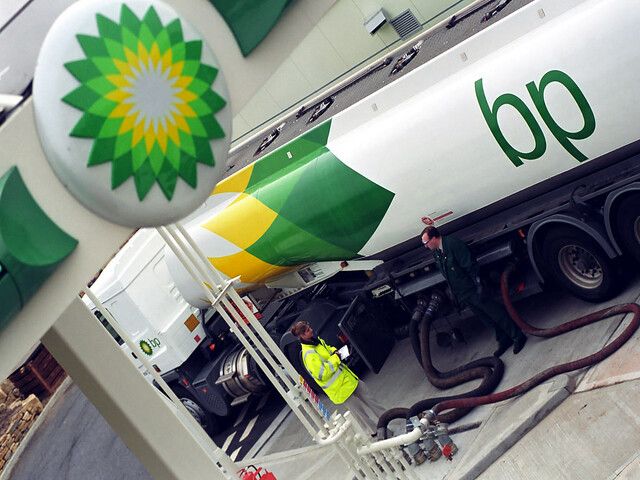Oil and gas giant BP is ramping up its climate goals by setting a 2050 absolute net zero target for its indirect, or Scope 3, greenhouse gas emissions.
Previously, it had aimed to reduce its Scope 3 emissions intensity by 50% by 2050.
It had also stated it would reduce its operational – or Scope 1 and Scope 2 – emissions by 30%-35% by 2030, but this target has now been raised to a reduction of 50% by 2030.
The more ambitious goals were announced alongside news last week of BP’s highest annual profits in eight years. BP made a profit of $12.9bn in 2021 after a loss of $5.7bn in 2020.
The company maintained its dividend of 5.46 cents per share and stated it will buy back $1.5bn of shares in the first quarter of this year.
Capex shift
BP also stated it plans to increase the proportion of its capital expenditure in transition growth businesses to more than 40% by 2025. It is aiming to raise this to 50% by 2030.
The company identified five transition “growth engines”: bioenergy, convenience, electric vehicle (EV) charging, renewables and hydrogen. By 2030, BP aims to generate earnings of $9-10bn from these areas.
Bioenergy, according to BP, refers to biofuels including sustainable aviation fuel and biogas.
The oil major stated it expects to invest in five major biofuels projects, including the conversion of up to two refineries. The company stated it sees “opportunity for considerable growth in biogas in the US, Europe and UK.”
Getting greener
Pointing to examples of its efforts to play its part in the energy transition, BP said it is on track to double its 2019 earnings from convenience and mobility to $9-10bn in 2030. BP also highlighted it has quadrupled its renewables development pipeline since the end of 2019 – from 6GW to 24.5GW.
“With disciplined annual capital expenditure in low carbon energy planned to grow to $3-5bn by 2025 and $4-6bn by 2030, BP is aiming for ebitda of $2-3bn by 2030,” the company stated.
In terms of hydrogen, BP said it has built a “portfolio of options in advantaged markets with a potential capacity of 0.7-1.3 million tonnes a year.”
Despite a prediction oil and gas production with will drop 40% from 2019 levels by 2030, BP said it expected ebitda from hydrocarbons to continue at around $33bn a year to 2025. It is aiming to maintain ebitda in a $30-35bn range up to 2030.
Since the start of 2020, eleven new major hydrocarbon projects have begun, as part of a six-year programme of 35 major projects, BP stated.
UK plans
BP announced plans for investment in the UK specifically. They included:
- producing clean energy from offshore wind in the Irish Sea and off the coast of Scotland, and from solar across the country developed by Lightsource BP;
- manufacturing green and blue hydrogen, and other opportunities enabled by CCUS, in Teesside, Scotland and elsewhere;
- growing new markets for hydrogen, including in centres such as Teesside and Aberdeen, and transport opportunities for hydrogen and biofuels;
- continued growth of its market-leading EV charging network and convenience offers.
Bernard Looney, BP CEO, said: “We are accelerating the greening of BP. Our confidence is growing in the opportunities that the energy transition offers. This allows us to raise our low carbon ambitions, and we are now aiming to be net zero across operations, production and sales by 2050 or sooner – unique among our peers.
“In a world heading for net zero, we’re best positioned for success if we are also heading for net zero. We believe our ambition is both good business and supports society’s drive towards the Paris goals.”








